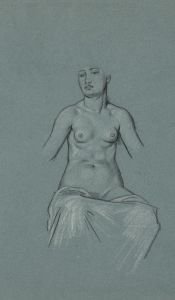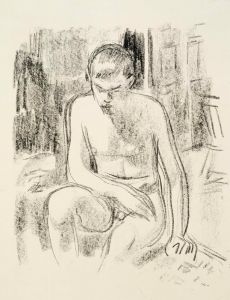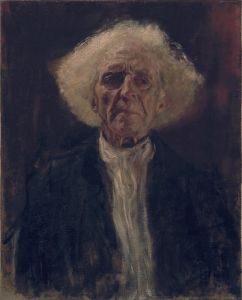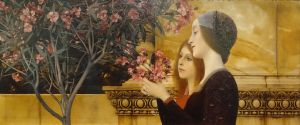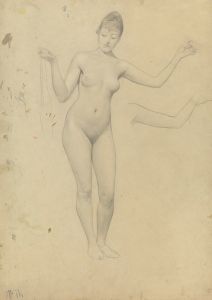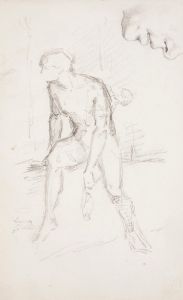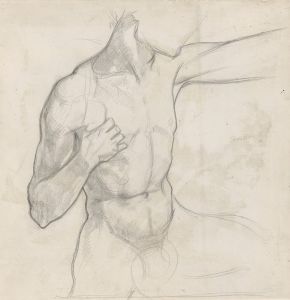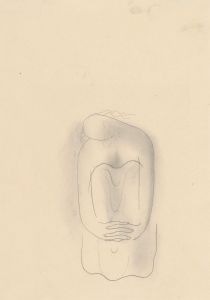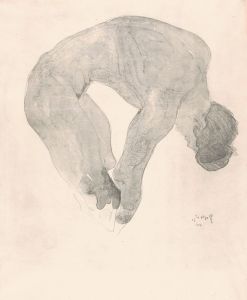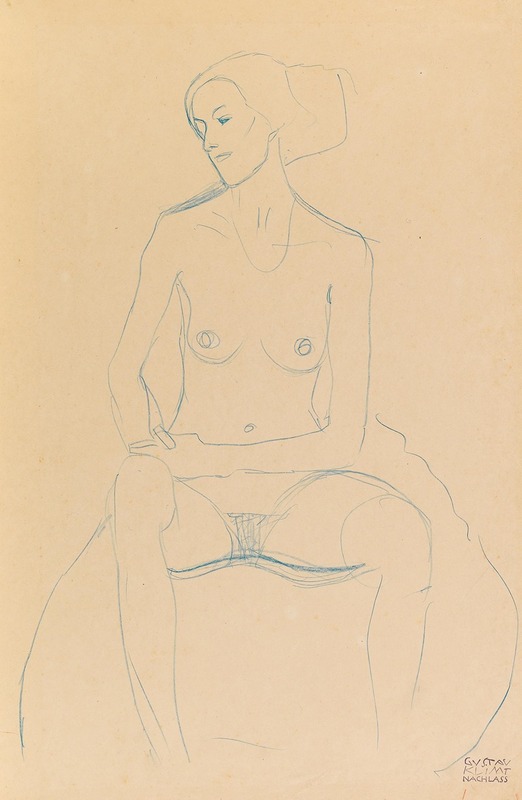
Seated nude girl, from the front, with tackled legs
A hand-painted replica of Gustav Klimt’s masterpiece Seated nude girl, from the front, with tackled legs, meticulously crafted by professional artists to capture the true essence of the original. Each piece is created with museum-quality canvas and rare mineral pigments, carefully painted by experienced artists with delicate brushstrokes and rich, layered colors to perfectly recreate the texture of the original artwork. Unlike machine-printed reproductions, this hand-painted version brings the painting to life, infused with the artist’s emotions and skill in every stroke. Whether for personal collection or home decoration, it instantly elevates the artistic atmosphere of any space.
Gustav Klimt, an Austrian symbolist painter, is renowned for his distinctive style and contribution to the Vienna Secession movement. Among his extensive body of work, "Seated Nude Girl, from the Front, with Tackled Legs" is one of his many studies that exemplifies his fascination with the female form. Klimt's oeuvre often includes sketches and paintings that explore themes of sensuality and the human figure, and this particular piece is no exception.
Klimt was born on July 14, 1862, in Baumgarten, near Vienna, in the Austrian Empire. He was the second of seven children in a family that was artistically inclined, which undoubtedly influenced his future career. Klimt's formal art education began at the Vienna School of Arts and Crafts (Kunstgewerbeschule), where he studied architectural painting. His early work was characterized by a more academic style, but he gradually developed a more personal and symbolic approach.
"Seated Nude Girl, from the Front, with Tackled Legs" is a drawing that showcases Klimt's skill in capturing the human form with both precision and an expressive quality. The piece is a testament to his ability to convey the delicate balance between realism and abstraction. Klimt's drawings often served as preparatory studies for his larger works, allowing him to experiment with composition, form, and texture.
In this drawing, Klimt employs a delicate line to outline the figure of the seated nude girl. The pose, with her legs tucked beneath her, suggests a sense of intimacy and vulnerability. Klimt's attention to detail is evident in the rendering of the figure's anatomy, yet there is also a fluidity and softness to the lines that imbue the work with a sense of movement and life. The simplicity of the composition draws the viewer's focus to the subject, emphasizing the natural beauty of the human form.
Klimt's treatment of the female body often sparked controversy during his lifetime, as his work was seen as both provocative and groundbreaking. His approach to the nude was not merely about physical representation but also about exploring deeper themes of identity, sexuality, and the human experience. This focus on the female form can be seen throughout his career, from his early academic studies to his later, more elaborate paintings.
The Vienna Secession, a movement Klimt co-founded in 1897, was instrumental in shaping his artistic direction. The group sought to break away from the traditional academic art of the time, embracing new styles and ideas. Klimt's work, including pieces like "Seated Nude Girl, from the Front, with Tackled Legs," reflects the Secessionist ideals of innovation and exploration.
Klimt's legacy is marked by his unique ability to blend symbolism, eroticism, and a profound understanding of the human condition. His work continues to be celebrated for its beauty and complexity, and his drawings remain an essential part of his artistic output. "Seated Nude Girl, from the Front, with Tackled Legs" is a fine example of Klimt's mastery of line and form, capturing the essence of his subjects with both sensitivity and strength.
Throughout his career, Klimt produced numerous drawings and paintings that have left a lasting impact on the art world. His exploration of the human figure, particularly the female form, remains a significant aspect of his work, offering insight into his artistic vision and the cultural context of his time.





